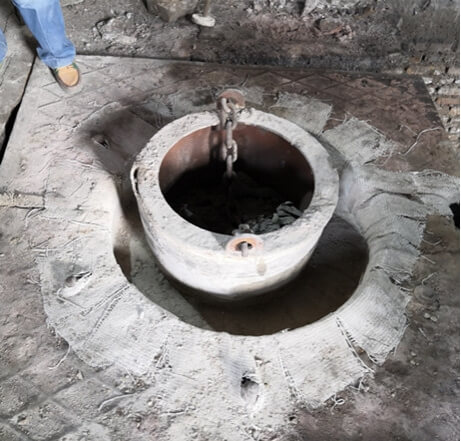Classification and instruction of dry ramming mass material:
1. Pay attention to moisture-proof when using high-speed iron and high-calcium-magnesia ramming mass castable refractory materials. The packaging should be double-layered with inner plastic and outer braided; Make sure to stack materials at every place on the bottom of the furnace to prevent the particles from being too thin; then use a shovel to spread out the materials piled up on the bottom of the furnace, repair the slope of the furnace, and make rounded corners at the intersection of the furnace wall and the bottom of the furnace, and then After the construction is completed, cover the bottom of the furnace with a thin steel plate or iron sheet for use. The scrap steel used in the first smelting furnace should be small in size and light in weight so as not to damage the bottom of the furnace.
2. When using silica ramming mass materials, the bottom of the furnace can be fed with 0-20mm material, depending on the thickness of the furnace bottom, generally divided into two ramming constructions; the furnace wall can be rammed with 0-15mm material, each time the material is 150-200mm thick, and the ramming is completed The next layer of furnace lining is covered with another layer of material.
3. Pay attention to moisture-proof when using aluminum-magnesium ramming mass materials, so as to avoid the agglomeration and deterioration of magnesia fine powder and affect the use. Aluminum-magnesium raw materials are weakly alkaline materials.
4. When using anti-seepage refractory material, it can be directly laid on the light brick at the bottom of the aluminum electrolytic tank or between the carbon brick and the light brick on the tank wall, and put into use after compaction, not only to prevent the penetration of electrolyte Na3ALF6, but also to prevent the penetration of electrolyte Na3ALF6. to protect lightweight bricks.

